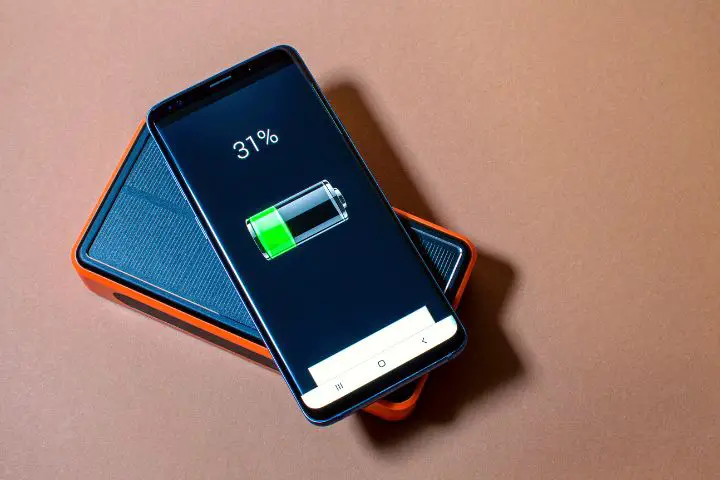Your Guide to Solar Clothing & Fabrics: Is Power Dressing a Reality?
You have seen solar panels on roofs, building walls, and stretched over vast plains or water bodies. But how about placing solar panels on a new kind of surface – the human skin?
Well, not exactly on the skin, but on the clothes that we wear.
Throughout the last decade, researchers from all over the world have been developing new fabric varieties that can generate power from solar energy. With the world moving rapidly towards ever-new sustainable solar technologies, solar-powered clothing is not a far-fetched concept anymore.
So why can’t you buy solar-powered clothing to light up your life from the nearby Walmart store?
Let’s dive deeper and find the answer.
What Are Solar Fabrics (and Why Do We Need Them)?
Allow me to start with the “Why” and then move into the “What”.
The idea of using batteries to integrate energy harvesting capability in clothing has been floating around for a long time. But it’s not a practical one. The primary reason is the batteries themselves. While larger batteries will make the clothing bulky, smaller ones will need frequent recharging.
With the advancement of PV technologies, the idea of solar energy harvesting by adding flexible modules to textiles gained traction.
By now you’ll be wondering, doesn’t wearing solar clothes just for on-the-go charging of our smartphones seem like an overkill?

Actually, there are many more advantages of solar clothes than just that. One thing is, they will be an easier choice for charging blood pressure, ECG monitors and other wearable or portable personal health devices. For adventure lovers, tents or backpacks made from solar fabric can be a source of easy power in remote locations.
And not only will they provide ready power but they will also reduce the weight that you carry. Imagine how much extra weight a soldier on a critical mission needs to carry in terms of batteries. That can be as heavy as 20 pounds or more!
The use of solar fabric can bring down this weight to just a few pounds.
Needless to say, using solar fabrics is super easy. They are perfect for supplying emergency power in war or disaster-stricken areas by using a few square meters of such fabric. Think of refugee centers made from solar fabrics generating electricity. Quite simply, the scope of application of solar fabric is huge.
The concept of solar fabric is not just about attaching solar panels to your clothing. It’s about modifying the properties of the fabric and generating power from a micro level.
And this is where things get difficult.
Research yielded a few interesting outcomes. But not all of them were practically feasible options for manufacturing regular clothing. For example, dye-sensitized solar cells used pigments to absorb sunlight and generate electricity. However, they aren’t very stable and cells often break apart when stress is applied.
Another option was the use of polymer solar cells.
These are small, lightweight, and flexible interwoven metal wires coated with an active polymer. The polymer can absorb sunlight and act as a semiconducting polymer material. In addition, they have another coating of titanium dioxide nanotubes and sheets of carbon nanotubes.
I admit that sounds complicated. To make sense of it, you need to understand the electron and hole mobility in a typical PN junction solar cell.
Various methods like using PV wires and fabricated PV ribbons have been used for making these textiles. Some researchers also experimented with electrospun nano-fiber webs that go beyond traditional woven textile structures.
Solar Fabric Technology: Where Are We at?

The good news is, continuous research around the world has made it possible to overcome some of the drawbacks of solar fabrics. New designs and technologies have made it possible to incorporate ultrathin solar cells into cotton, linen, and viscose fabrics. Concepts for using sustainable biomaterials that can lead to recyclable solar fabric technology are also emerging. However, the overall progress is still in the baby stage.
In an exciting development, the researchers at Nottingham Trent University have developed e-textile. Tiny silicon solar cells were embedded in the yarn and then woven into a fabric. The cells are covered by a waterproof polymer resin and the clothing is lined with strong and flexible wiring.
The big plus is, you can use the e-textile like regular clothing and just toss it into the machine at 40°C. At the moment, it is in the prototype stage. So it will take a few more years to fine-tune the technology for commercial use.
Or, as Dr. Hughes-Riley, from Advanced Textiles Research Group behind this project explains: “The material which we have developed, for all intents and purposes, appears and behaves the same as any ordinary textile, as it can be scrunched up and washed in a machine. But hidden beneath the surface is a network of more than a thousand tiny photovoltaic cells which can harness the sun’s energy to charge personal devices.”
Engineers from MIT made another breakthrough by developing ultralight fabric solar cells that can generate 18 times more power per kilogram than typical solar panels. The cells are around 15 microns in thickness and can be laminated on various surfaces.
To make the modules wear-resistant, the engineers have used a special composite fabric called Dyneema. And Dyneema is 15 times stronger than steel, without increasing the weight. The solar cells were adhered to the fabric by using UV-curable glue. The resulting power output, the scientists reported, was 370 watts per kilogram.
And that’s not all there is to this discovery.
The ultra-thin cells can not only be used on clothing but on upholstery as well. And even after rolling and unrolling this fabric 500 times, the cells retain 90% of their power-generating ability. That ensures decades of use without the risk of the material failing.
How Effective Are Wearable Solar Panels?

At this point you realize, coating fabrics with solar cells isn’t an easy task.
Firstly, unlike glass or metal which have smooth surfaces, all fabrics have a rough texture. Besides, any fabric is also porous, and that makes coating them with other materials a big challenge.
And then there’s the question of what it’s going to feel like on your body.
The ideal solar fabric should have all the properties of a normal textile. These include flexibility and breathability. It should also be able to withstand deformation and remain wash durable. Last but not least, it should provide good wearability in terms of softness and comfort. However, solar fabrics lacked many of these properties in their early development stages.
But the real challenge lies elsewhere. Solar fabrics are not as efficient as traditional solar panels. In other words, we’ll need to refine the technology many times over before it starts producing enough usable energy to make a difference. The color and finishing of the textile will also have some impact on its energy-harvesting capacity.
At the moment, the efficiency of such fabrics is between 15 and 18%. Compared to that, top-end traditional solar panels can have an efficiency as high as 23.8%.
Another challenge for solar fashion is the design of a discreet but effective power management system. After all, we are all people, not mobile power generators. As the wearer moves and changes their exposure to the sun, the power generation will keep varying. Beyond that, there are factors related to shading and cloud cover. So the complex management system needs to be lightweight and non-intrusive.
Also, just like solar panels need cleaning, wearable applications will need washing.
And just like washing wears down fibers in your tees and jeans, it will degrade the integrated solar cells in time. That means solar fabrics need to be resistant to water-detergent mixture but also spinning and tumbling in hydro-mechanical devices like a washing machine. The frequent bending and stretching of the wiring can also reduce the efficiency of the cells.

From where we’re standing right now, it looks like all that technological evolution will make solar fabrics more expensive than traditional solar panels. So using them as regular clothing may not be a feasible option for the average consumer. However, we shouldn’t be blamed for expecting the prices to drop as technology advances.
Moreover, PV films or special coatings will need encapsulation for being integrated with fabrics. That would ensure stability and prevent degradation from wash cycles. The problem is, such a step may affect the air and moisture permeability, but also make the fabric far less stretchable. Your body won’t like that, especially in hot and humid climates.
Then again, buyers often make their decision based on the appearance and feel of the clothing. Unless fashion designers were to weigh in en masse, PV materials may have a negative effect on these properties, and remain unpopular.
In addition, there is a lack of global standards currently available for the testing of solar fabrics. The development of such standards will be necessary before solar clothes are commercially introduced.
(Where) Can I Buy Solar Clothes?
In reality, the fashion industry is slow to change its ways and embrace technologies that promote sustainability. It is hard to push fabric manufacturers to turn away from items they have been supplying for years and get innovative. Especially when it means taking fast fashion and grinding it to a halt!
So it’s not surprising that not many fashion designers are working on designing solar dresses. Back in 2006, designer Despina Papadopoulos turned heads by launching a Day-for-Night solar dress. It had 448 white circuit boards that could charge a device through a control board and a USB controller. While the dress was not a comfortable or practical choice, it had plenty of geek appeal.
In 2015, Pauline van Dongen, a Netherlands-based fashion designer launched a solar shirt that used thin film solar cells. Wearing the shirt for an hour under the full sun will generate enough power to charge a smartphone by 50%.
Many of her creations have been a part of fashion shows across the globe. Pauline has created a solar couture collection, a solar backpack, and also partnered with Tommy Hilfiger to develop a solar jacket with removable solar panels. In 2014, these solar-panelled field jackets from Tommy Hilfiger were priced at $599.
In a discussion with Forbes about smart fabrics, the designer said: “The next transition is to embed technology into textiles, like we do in our studio, and to look at the materials from a material and aesthetic point of view, not only from a functional perspective.”
However, some reports suggested that some of these dresses had limited flexibility and restricted movement. In some cases, the wiring incorporated in the fabric could be felt.
Pauline’s studio is also working on an R&D project called Suntex, a special solar fabric that is strong enough to be used as a building material. It works as a power-generating second skin on concrete or glass surfaces.
There have been other interesting collaborations too. Fabric designer Marianne Fairbanks and Trisha Andrew, an organic chemistry professor, developed a solar textile made from – you will never guess it – pineapple fiber!
And Fairbanks was quite excited about the project. “They could be deployed in the wilderness for a hunter or in the field for medical or military applications in a way that big clunky solar panels never could be”, she told the Smithsonian. Still, large-scale manufacturing of the material is not a reality at the moment.
As I said above, the use of solar fabric is not limited to clothing. The Kingstons Beam Backpack is a good example of solar energy harvesting. The backpack has used a layer of flexible thin film solar cells on its outer surface. The conversion efficiency is a respectable 19.2%.
Pvilion, a company based in Brooklyn, NY has developed a lightweight solar fabric from PVC-coated polyester and integrated it with solar panels. They have designed tents and canopies using this material, which have won awards from the Advanced Textiles Association in 2022. Their disaster response canopy is being used by the US Air Force as summer camp shelters for Ukrainian refugee children.
The Future of Wearable Solar Panels
A recent report has highlighted the fact that the solar fabric market is all set to grow at a steady pace till 2029. The compound annual growth rate is projected to hover around 5.7% during this period.
But let’s not get out hopes high about walking around wearing solar coats and jackets anytime soon.
Have you heard of any solar brands or global activewear brands promoting solar clothing in recent times?
The simple answer is – no.
Strictly speaking, considering the current advancement in solar fabric technology, you won’t find solar-powered clothing in your neighborhood boutiques. Nor are they easy to pick on the international market.

In fact, scientists are also researching the fascinating possibility of using triboelectric nanogenerators in clothing to generate electricity. The mechanical movement of the person can like walking or running can initiate this process. Since such a fabric will generate electricity when the fibers move against one another, they can be a more effective way to design device-charging clothing.
Final Thoughts
For sure, there are plenty of exciting developments underway to advance solar fabric technology. But these technologies need to evolve further before wearable solar clothing is available on the commercial market. At the moment, the common practice of using batteries to power e-textiles seems likely to go on.
If you are thinking of wearing a solar-power-packed jacket on a sunny day, hold on to the thought. It will take some more time for it to become a reality.
Before that happens, it’s better to just admit that such initiatives are little more than artsy pieces of solar tech that’s more about raising awareness than making a palpable impact.






